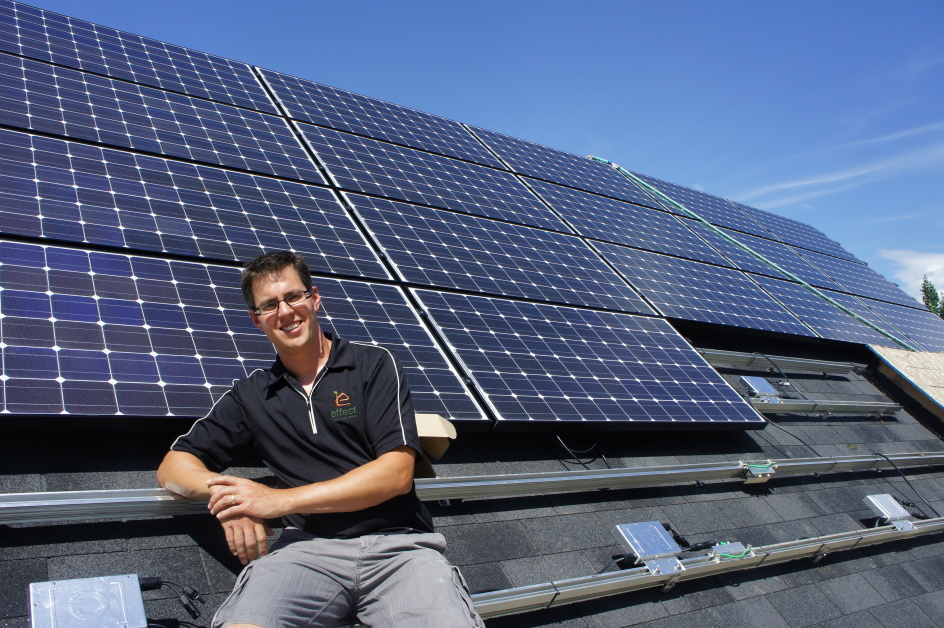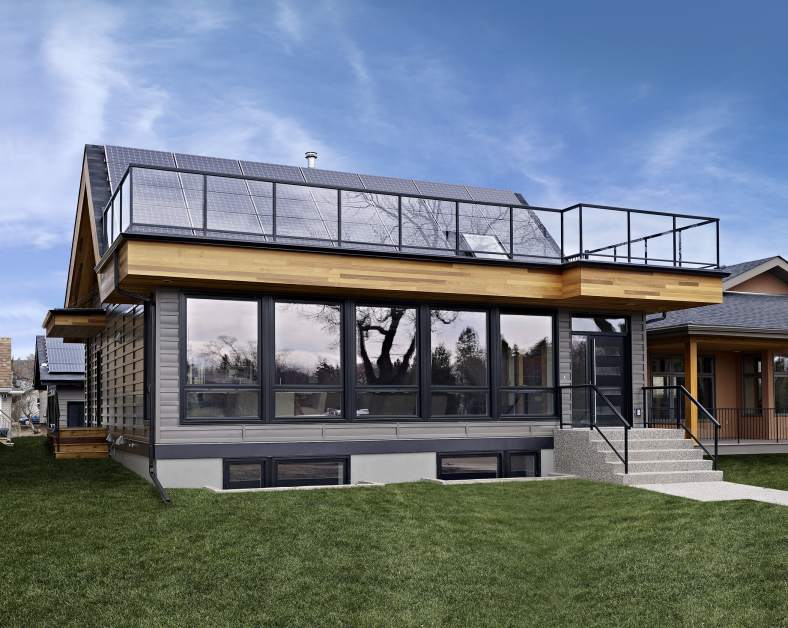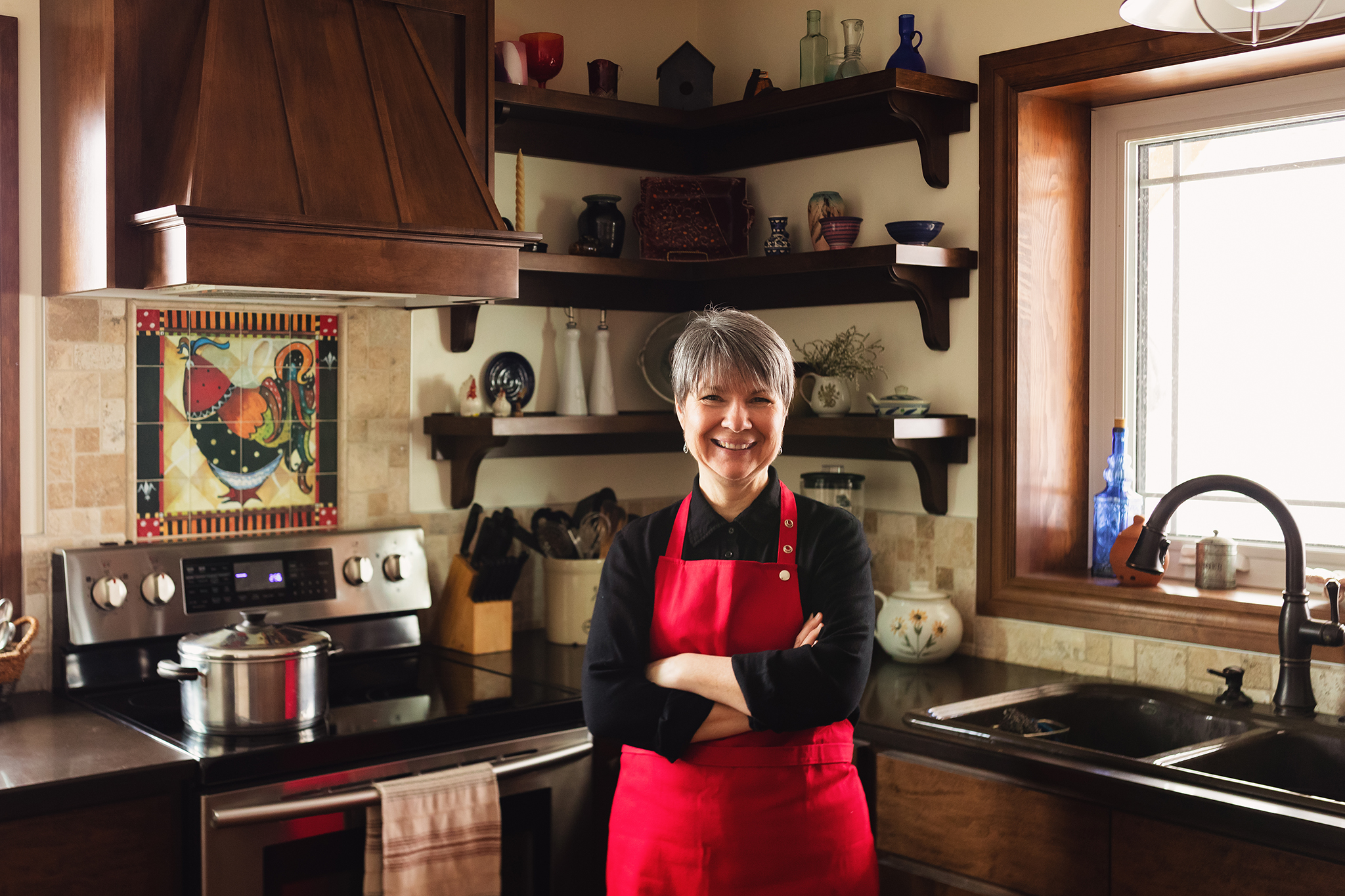Lucie Heins, a resident of Lac Ste County, Alta., took possession of her near-net zero home in August 2014. Relying on a combination of solar technology and electricity from the grid, her home is a real-world example of the diverse energy mix we know engaged women support.
Over the last few years, near- and net-zero homes have been gaining traction in Canada as a viable path towards reduced emissions and energy costs, outcomes that benefit both the economic wellbeing of the homeowner and our country’s broader climate goals.
However, the push for net-zero housing is complicated by the significant financial investment required to both retrofit existing and construct new homes. While reducing emissions is important to Canadians, the ongoing affordability crisis makes it difficult for homeowners to foot the $60,000 to $100,000 bill required for deep retrofits or afford the premium materials necessary for new construction.
Grants are available to help subsidize the cost, but none cover everything entirely, and they are in high demand.
The Canada Greener Homes Grant, which began providing up to $5,000 per eligible applicant for energy-efficient upgrades for Canadian homes in December 2020, closed early after receiving more than 500,000 applications. In just three years, more than 225,000 people from Ontario, 85,600 from Quebec, 70,600 from Alberta and 55,400 from B.C. applied for the grant.
So, is a net-zero home worth the cost? How are they made and what benefits do they provide to offset the initial investment the homebuyer or owner has to make — with or without a government subsidy or interest-free loan?
For those interested in learning more about the industry and the government grants now available for the construction of a new net-zero home or retrofit of a traditional home, we’ll start at the beginning.
The history of net-zero homes in Canada is a relatively short one, beginning with the Canada Mortgage and Housing Corporation’s EQuilibrium Sustainable Housing Demonstration Initiative in 2006. The initiative challenged builders across Canada to design and construct a home that produced nearly as much energy as it consumed, leading to the creation of 12 near-net zero homes across the country — the first of their kind in Canada.
Over the last 20 years, technological developments and architectural advancements have made modern net-zero houses increasingly accessible, functional and beautiful.
According to the Government of Canada’s new Canada Green Buildings Strategy (CGBS), released last month, “To reach Canada’s climate goals, reduce energy bills and build up Canada’s supply of energy-efficient and resilient building stock, there is a need to accelerate the retrofit of approximately 10 million buildings and construct millions of new net-zero buildings in the coming decades.”
To support this goal, the government announced the $800 million Canada Greener Homes Affordability Program (CGHAP), which provides forgivable and low-interest loans to low- to medium-income Canadians to help finance building retrofit measures, which can total hundreds of thousands of dollars, depending on scope.
This brings us to a place where housing policy, energy policy and the environment meet, so we’ve put together some fast facts about net-zero homes to help navigate this topic as it gains traction with policymakers and homeowners.
Does net zero = zero carbon emissions?
In short, no.
A net-zero home is designed and constructed for optimal energy efficiency and cost using a few key components.
“The definition of a net-zero home is a home that produces as much energy as it consumes over the course of a year,” says Les Wold, general manager for Effect Home Builders in Edmonton, Alta. “The home generally produces more energy than it requires in the summer months and draws what it specifically needs in the winter months, balancing out its energy generation and consumption over the course of a year.”

Effect Home Builders general manager Les Wold next to the solar installation at the Belgravia Green Net Zero Energy Home located in Edmonton. Photo credit: Effect Home Builders
What are the fundamental components of a net-zero home?
There are three critical building blocks for a net-zero home: a superior building envelope, smaller, energy-efficient heating and ventilation methods, and renewable energy generation and storage. This is where extra costs come into play, as these materials are more expensive, but have long-term benefits related to lowering emissions and energy expenses.
The building envelope
The building envelope is comprised of the components that separate the inside from the outside, including things like exterior walls, foundation, roof, windows, doors and insulation.
The envelope of a net-zero home is built to be airtight using high-performance windows and doors, and a significant amount of insulation is used to reduce heat loss in the winter and minimize heat capture in the summer.
Heating and ventilation methods
Systems for space heating, cooling, water heating and ventilation are properly sized and energy efficient. Because net-zero homes require an airtight envelope, mechanical ventilation filters pump air in and out of the home, leading to reduced allergens and lower outdoor air pollution.
Renewable energy systems and storage
Net-zero homes are designed to produce as much clean energy as they consume using on-site renewable energy systems — the most common currently being solar panels.
Batteries are often used to store electricity, and in cases where they are not used, the electricity produced is sent back to the grid. When it’s sent to the grid, a “net metering” credit process is used, so a homeowner can send excess power to the grid in the summer when lots of energy is produced, and then draw on the stored credits in the winter when consumption is higher.

Belgravia Green Net Zero Energy Home located in the Belgravia neighborhood in Edmonton. Photo credit: Effect Home Builders
Weighing the options: Upfront investment vs. Long-term payoffs
When it comes to investing in a net-zero home, it’s all about the long game. The initial cost for superior materials is a major consideration for homebuyers as it increases the price of their home which is often cost prohibitive. This is why there were more than 500,000 applications for the Canada Greener Homes Grant.
As mentioned, the subsidy was capped at $5,000 per eligible applicant, which only scratches the surface when it comes to the cost of retrofitting a net-zero home or constructing a new one. The grant closed earlier this year when all money was allocated. Still available is the Canada Greener Homes Loan, which provides eligible homeowners with interest-free 10-year loans of up to $40,000 for green home retrofits or construction.
“It does pay for itself over time,” says Wold. “But it’s not a quick flip because there are upfront costs to make it better from the start.”
In the midst of Canada’s ongoing affordability crisis, this upfront cost presents as a huge barrier in the push for net-zero housing.
For Heins, a client of Effect Home Builders, the cost was entirely worth it when considering the added benefits of reduced operating costs over time, increased health benefits and a reduced environmental footprint, all while benefitting from the reliability that comes from invoking a diverse energy mix.
“It is definitely worth the investment,” she says. “The home is very quiet. We hardly hear outdoor noises such as rain or thunder, and the temperature remains the same throughout the house. Humidity is also regulated, and in the summer the house is naturally cooler with no need to use the air conditioner.
“We are still connected to the grid, which is a good thing because we then contribute to producing clean energy that others get to use when we have excess,” she adds. “And in the winter, when solar energy is at its lowest, it is nice to have the backup of the energy grid.”
Effect Home Builders won the Alberta Green House of the Year award in 2015 for Heins’ home, which she says they are “still giddy about, 10 years later.”
